
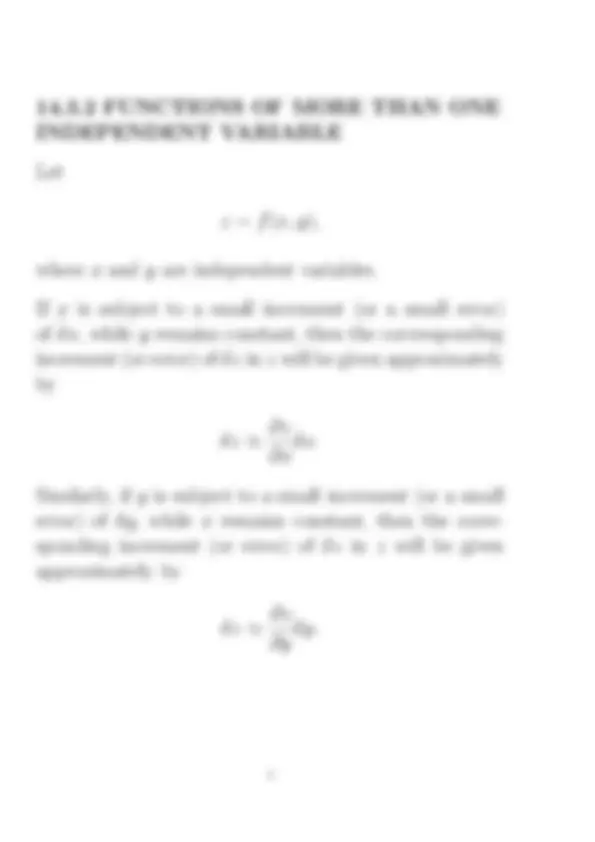
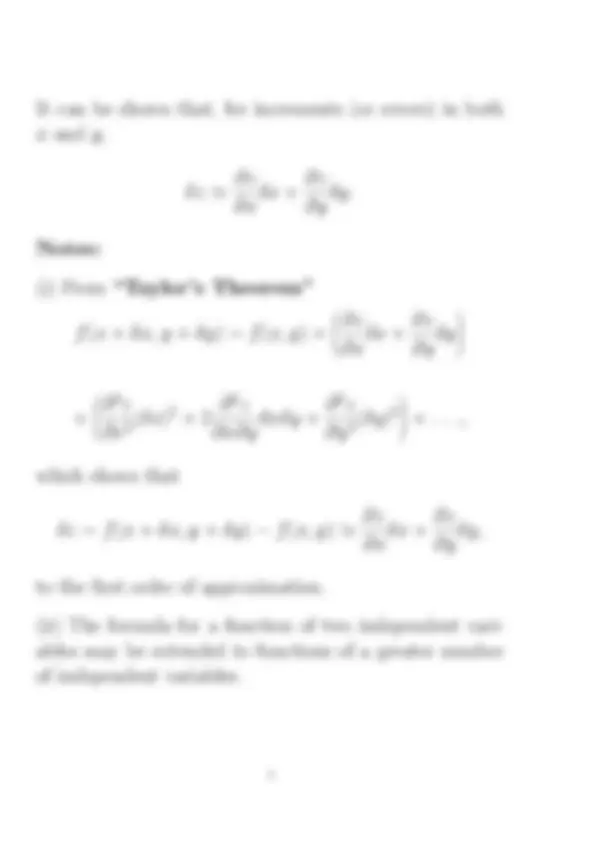
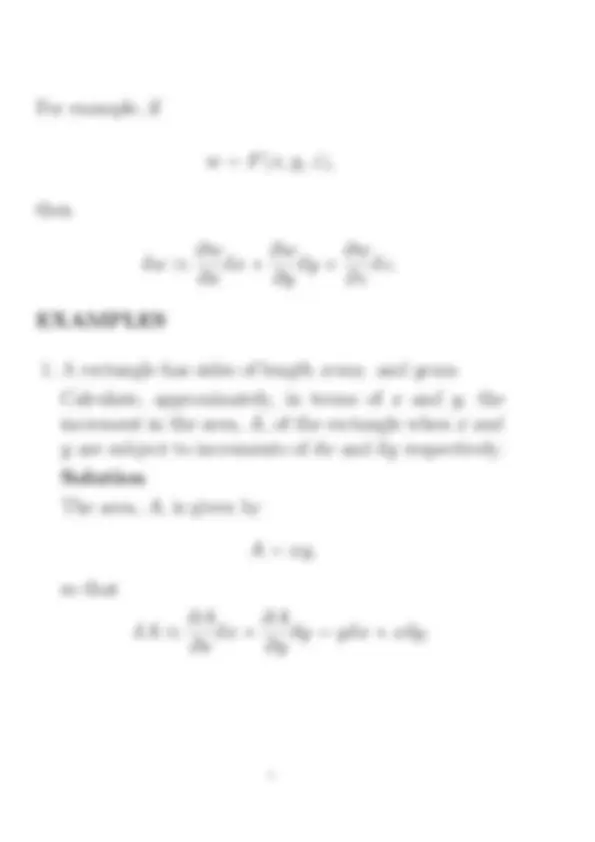
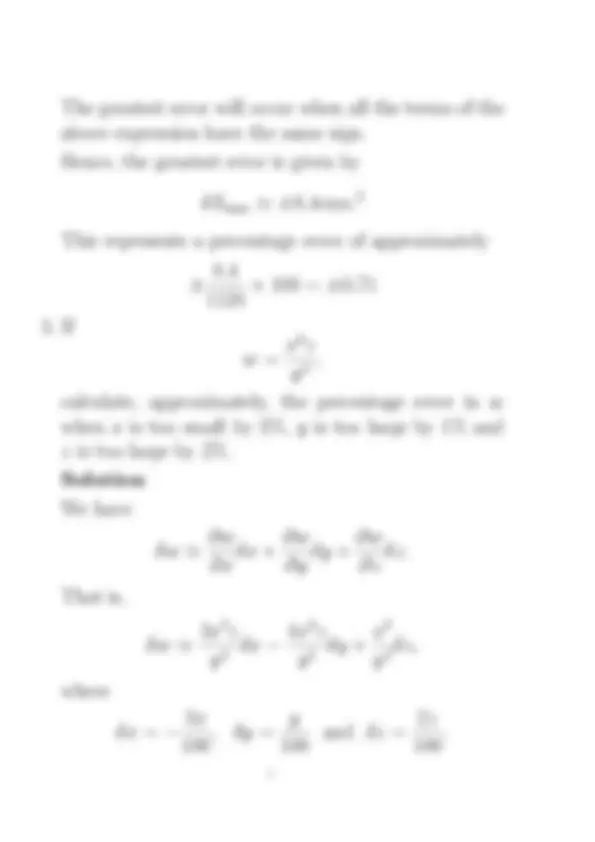
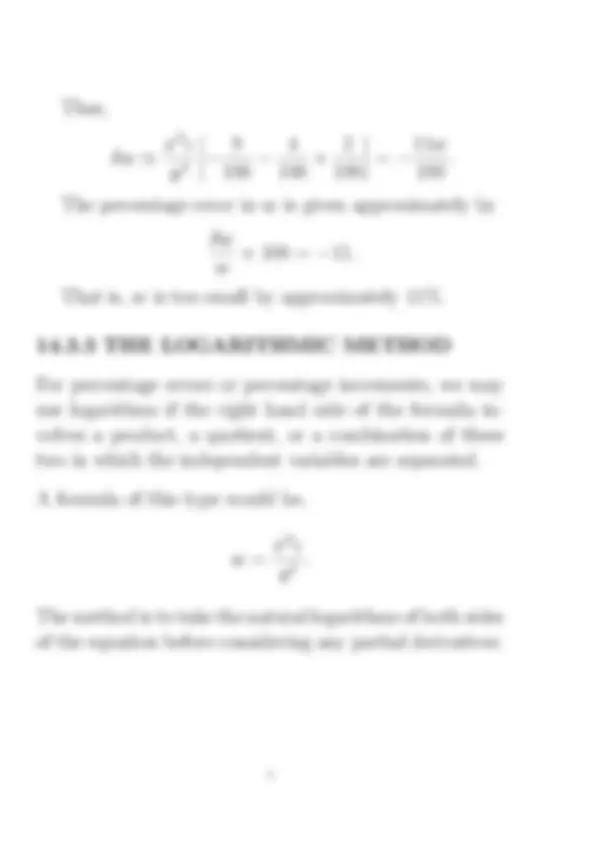
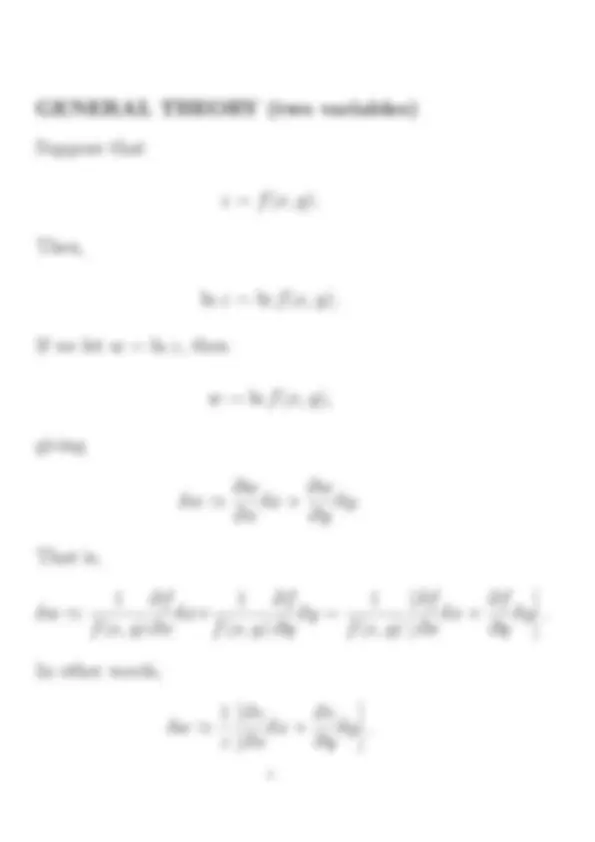
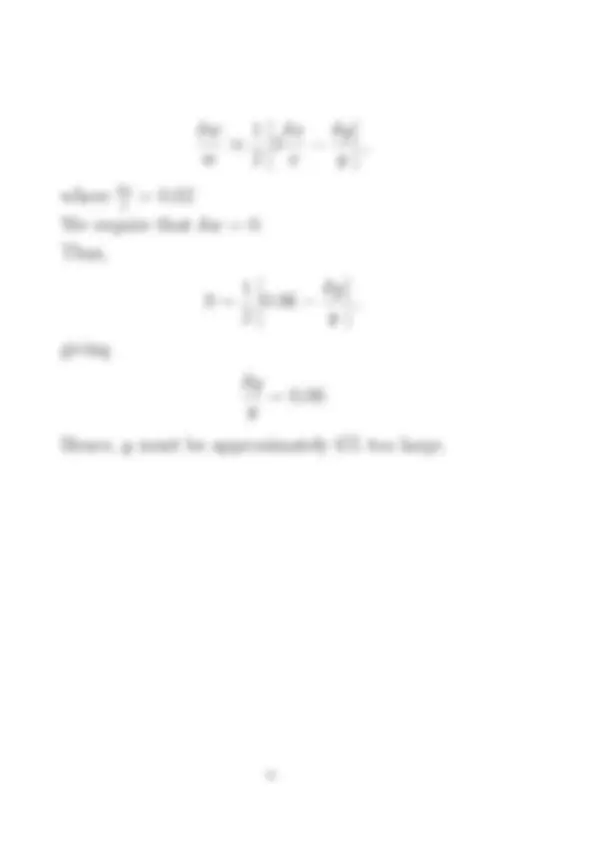


Study with the several resources on Docsity

Earn points by helping other students or get them with a premium plan


Prepare for your exams
Study with the several resources on Docsity

Earn points to download
Earn points by helping other students or get them with a premium plan
Community
Ask the community for help and clear up your study doubts
Discover the best universities in your country according to Docsity users
Free resources
Download our free guides on studying techniques, anxiety management strategies, and thesis advice from Docsity tutors
An explanation of partial differentiation and its application to functions of one and more than one independent variable. It includes examples and formulas for calculating increments and errors in terms of independent variables. The document also introduces the logarithmic method for percentage errors or percentage increments.
What you will learn
Typology: Slides
1 / 13

This page cannot be seen from the preview
Don't miss anything!








14.3.1 Functions of one independent variable - a recap 14.3.2 Functions of more than one independent variable 14.3.3 The logarithmic method
If
y = f (x),
then
(a) The increment, δy, in y, due to an increment of δx, in x is given (to the first order of approximation) by
δy ' dy dx δx.
(b) The error, δy, in y, due to an error of δx in x, is given (to the first order of approximation) by
δy ' dy dx δx.
It can be shown that, for increments (or errors) in both x and y,
δz ' ∂z ∂x δx + ∂z ∂y δy.
Notes:
(i) From “Taylor’s Theorem”
f (x + δx, y + δy) = f (x, y) +
^ ∂z ∂x
δx + ∂z ∂y
δy
^ ∂^2 z ∂x^2 (δx)^2 + 2 ∂^2 z ∂x∂y δxδy + ∂^2 z ∂y^2 (δy)^2
+.. .,
which shows that
δz = f (x + δx, y + δy) − f (x, y) ' ∂z ∂x δx + ∂z ∂y δy,
to the first order of approximation.
(ii) The formula for a function of two independent vari- ables may be extended to functions of a greater number of independent variables.
For example, if
w = F (x, y, z),
then
δw ' ∂w ∂x δx + ∂w ∂y δy + ∂w ∂z δz.
A = xy, so that
δA '
∂x δx +
∂y δy = yδx + xδy.
Solution First, denote the lengths of the edges of the block by x, y and z.
��
� ��
�
��
� x
z (^) y
The surface area, S, is given by
S = 2(xy + yz + zx),
which has the value 1120cms^2 when x = 10cms., y = 12cms. and z = 20cms. Also,
δS '
∂x δx +
∂y δy +
∂z δz,
which gives
δS ' 2(y + z)δx + 2(x + z)δy + 2(y + x)δz.
On substituting x = 10, y = 12, z = 20, δx = ± 0 .05, δy = ± 0 .05 and δz = ± 0 .05, we obtain
δS ' ±2(12+20)(0.05)±2(10+20)(0.05)±2(12+10)(0.05).
The greatest error will occur when all the terms of the above expression have the same sign. Hence, the greatest error is given by δSmax ' ± 8 .4cms.^2 This represents a percentage error of approximately
±
w = x^3 z y^4
calculate, approximately, the percentage error in w when x is too small by 3%, y is too large by 1% and z is too large by 2%. Solution We have δw ' ∂w ∂x δx + ∂w ∂y δy + ∂w ∂z δz.
That is,
δw ' 3 x^2 z y^4 δx − 4 x^3 z y^5 δy + x^3 y^4 δz,
where δx = − 3 x 100 , δy = y 100 and δz = 2 z 100
GENERAL THEORY (two variables)
Suppose that
z = f (x, y).
Then,
ln z = ln f (x, y).
If we let w = ln z, then
w = ln f (x, y),
giving
δw ' ∂w ∂x δx + ∂w ∂y δy.
That is,
δw '
f (x, y)
∂f ∂x
δx+
f (x, y)
∂f ∂y
δy =
f (x, y)
^ ∂f ∂x
δx + ∂f ∂y
δy
.
In other words,
δw '
z
^ ∂z ∂x δx + ∂z ∂y δy
.
Hence,
δw ' δz z
The fractional increment (or error) in z approximates to the actual increment (or error) in ln z.
Multiplication by 100 will, of course, convert the frac- tional increment (or error) into a percentage.
Note: The logarthmic method will apply equally well to a func- tion of more than two independent variables where it takes the form of a product, a quotient, or a combina- tion of these two.
EXAMPLES
calculate, approximately, the percentage error in w when x is too small by 3%, y is too large by 1% and z is too large by 2%.
δw w
3 δx x
δy y
,
where δxx = 0. 02 We require that δw = 0. Thus,
0 =^1 2
0. 06 − δy y
,
giving
δy y
Hence, y must be approximately 6% too large.